What breeds are the most affectionate cats?
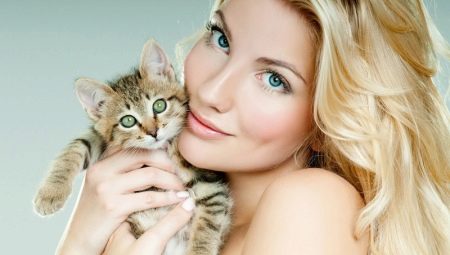
"I am a cat, I walk on my own." How many times have we heard this phrase, immediately realizing that we are talking about a wayward creature with a complex character. And now, choosing a kitten for ourselves, a child, other relatives or friends, we ask ourselves the question: how to get an animal that will be an affectionate pet, and not an aggressive bully with a torn ear or an unsociable loner? You can take a little handsome from the driveway cat - after all, she is so kind, but nothing is known about the kitten's dad. Therefore, many decide to buy a thoroughbred kitten, which is more understandable not only in appearance, but also in character. But what breeds can be called the most affectionate? Let's figure it out.
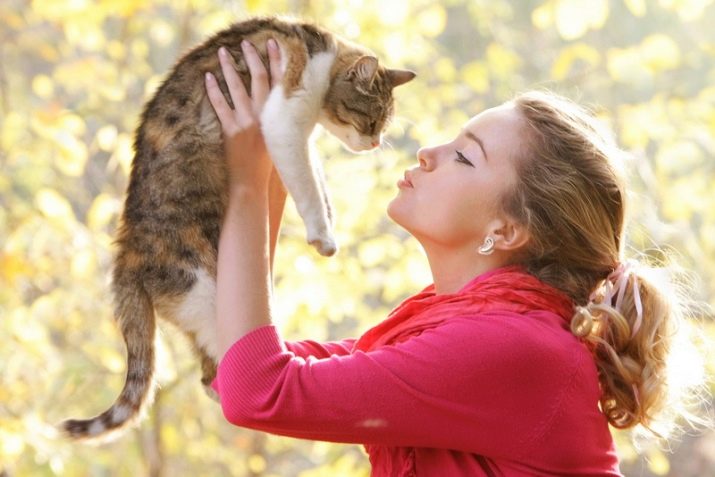
What can a feline disposition depend on?
Young researchers from the University of Lincoln (UK) observed 200 cats and their owners, trying to reveal the feline disposition. As a result, they identified 5 types of cat behavior (by analogy with humans, we can say - 5 types of characters).
- Human cats are very social creatures. They are interested in being next to the owner, they all the time flatter and "butt", trying to get a portion of stroking, kisses and care. It is this type that "tramples" family members and purrs benevolently. Such pets need communication, human closeness. They are so relaxed in the presence of the owner that they are ready to fold for him, as they say, in the letter "siu".
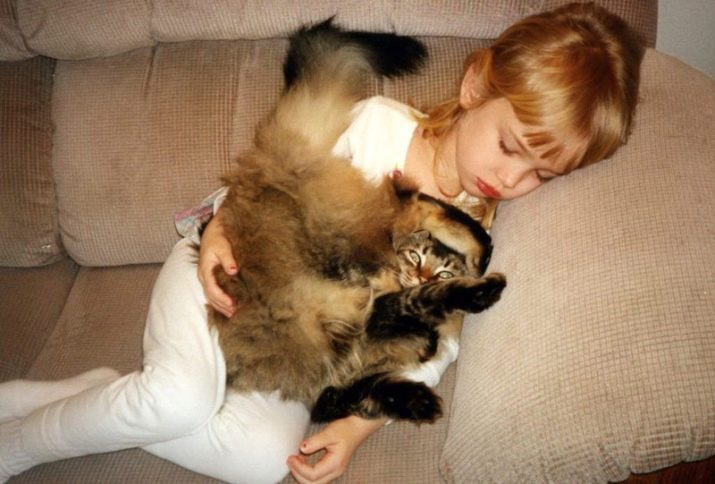
- Hunter cats need freedom, and therefore it is difficult for them to live in a city apartment, without a street. These are exactly those pets who love not only to catch mice and birds, but also to play with soft toys.The difficulty of communicating with this type is that hunters will react to any movement of the arm, leg, and, therefore, they can scratch or bite during the game.
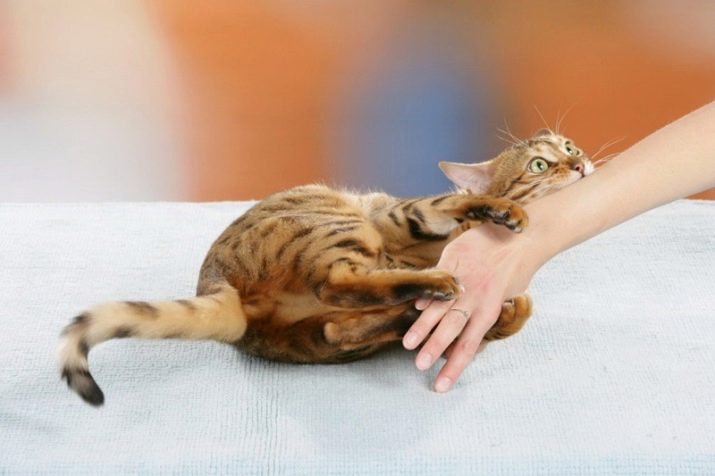
- A cat-cat needs communication with its own kind. For them, you will either have to immediately acquire a pair, or let them out on the street. The third option is to devote a lot of time to your pet, and they will flatter, poke their noses. This is a very social type of character, able to coexist with other animals in the same territory.
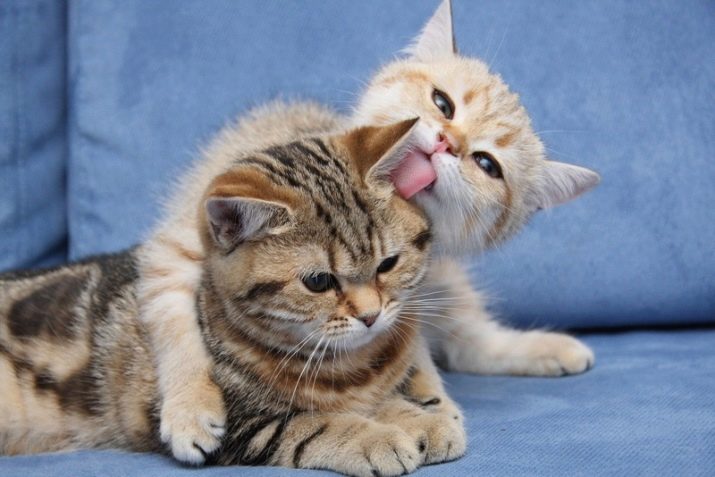
- The absurd cat is completely different: she is independent, her personal space is important for her. An attempt to unauthorizedly take her in your arms can end up with scratches, so you need to wait until she comes up for a portion of affection. This type treats people well, but it is difficult to call them affectionate.
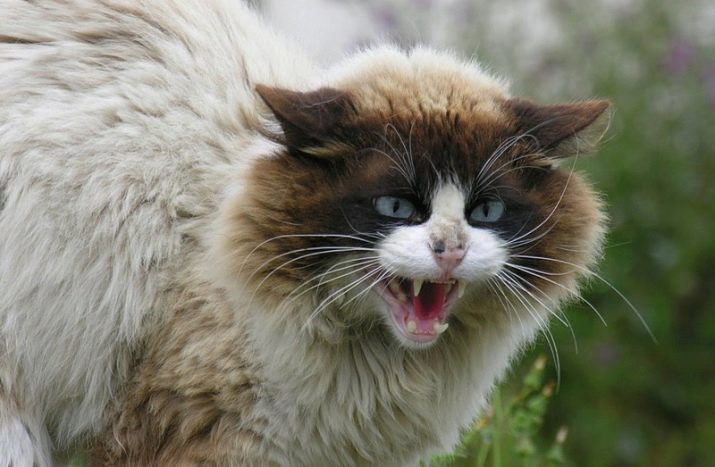
- Curious cat - this is a joy for the child and a problem for the hostess: it is this type who walks on fresh paint, sprinkles flour and cereals, gets tangled up underfoot. She's just curious, it was inherited. The cat will easily get used to the new home, because there are many new smells and objects.
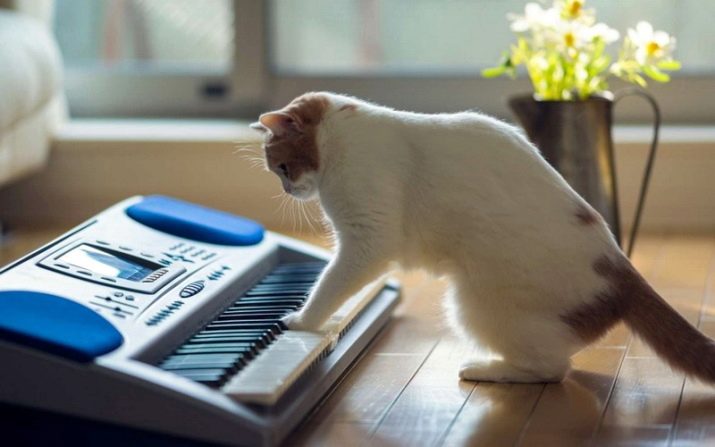
From the point of view of characterization of temperament, the most unkind cats can be considered as the most unkind. But there are other criteria that you can rely on when choosing a kitten.
Color
Surprisingly, by color, one can draw conclusions about the feline disposition.
- Whites are considered wayward. They can be compared to brides on their wedding day: the whole world revolves around them. But if something goes wrong, the cat will be offended and hide. Stroking and other caresses are condescending and sometimes aggressive.

- But black cats are affectionate and smart, friendly to all surrounding beings. It is important for them to be close to a person, stomp on him, purr, heal. It is absolutely right that black cats have a non-cat look: they often look with reproach, interest, resentment, and a request. How not to endow an animal with human characteristics.
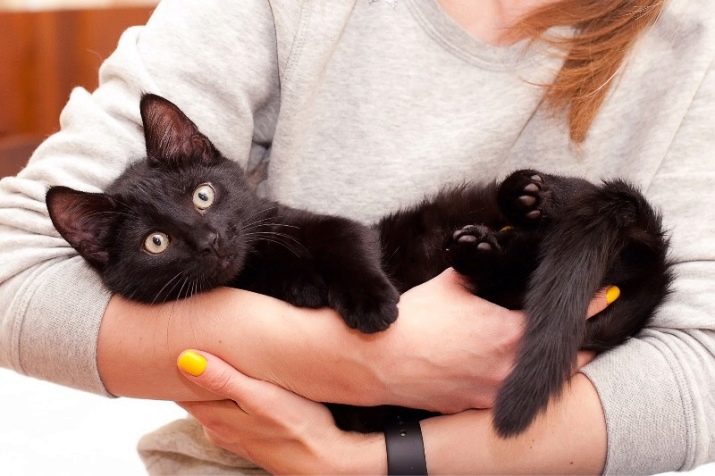
- That among people, that among cats, redheads are playful sly ones without aggression. In their spirit, to rush with a toy or a ball around the house, sharpen claws on upholstered furniture. These are real Skoda, ready for tricks.
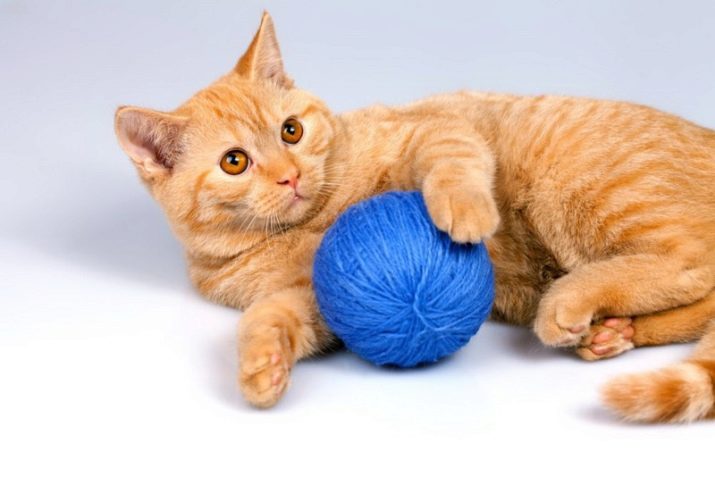
- The grays are the masters of life establishing their own rules in the house and on the street. Very often these are absurd cats or hunters, with the manners of a brawler and a bully. But here a lot will depend on the breed: smooth-haired are very different from long-haired (the former are more freedom-loving).

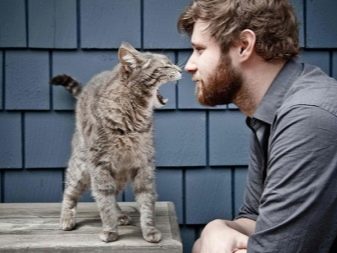
- Tricolor cats are excellent hunters, wonderful mothersthat will lick not only the kitten and your baby. They are always ready to defend the owner, moderately curious, able to exist with other animals, are somewhat condescending to the surrounding reality.
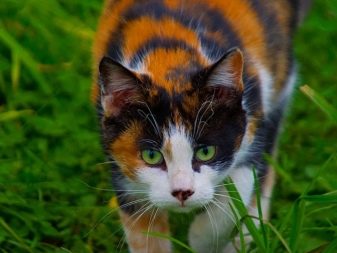
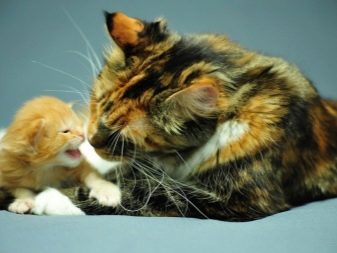
Since tricolor cats are practically not found, all these epithets refer to a cat - a domestic mascot.
Body type
Little is known about the relationship between feline character and physique, but it has been suggested that large cats with heavy bones are more phlegmatic. They say about such people: do whatever you want - no aggression. Thin-boned animals are more mobile and excitable, more emotional. But this does not always mean aggression; according to many ratings, sphinxes are recognized as the most affectionate.
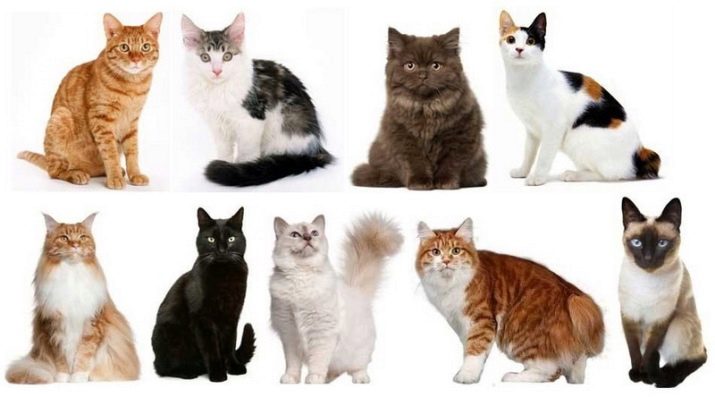
Floor
Very often, females perceive people as their children, and therefore behave more affectionately, docile. Cats can be very different: from "I am the owner of the house" to "hug me - I like it." It is believed that cats choose their mistress, and cats choose their owner.
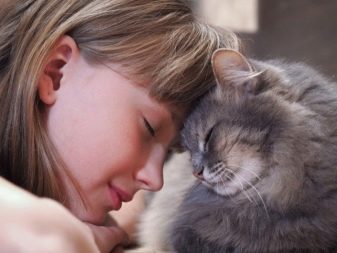

Heredity
If before buying a kitten there is an opportunity to get to know his mom and dad, watch them. The behavior of babies in the literal sense of the word is absorbed with milk: a good mousetrap will teach kittens this. A distrustful cat, protecting the offspring, will force you to be careful with people and animals. Daddy-cat transfers his character traits during the period of embryonic development, even without taking direct part in further education.

It is this property that distinguishes pedigree. After all, if a kitten has some congenital defects that do not correspond to the proud title of "Maine Coon" or "Abyssinian", then he will not receive a metric. But with heredity, the kitten will not acquire all character traits. Education will play a huge role.
Upbringing
If, relying on information from the Internet and the opinion of friends, you bought a "affectionate" breed, but it bites and scratches, then it may be a matter of education. Or rather, in his absence. The phrase “we are responsible for those we have tamed” is not only a quote from the book, but also the realities of life. The mother will start raising the kitten, and the person will continue. The sooner you get to know each other, the better. But up to 1-2 months pedigree babies grow up with their mother. After the appearance of a kitten in the house, you need to talk, stroke, pick up, play with him.
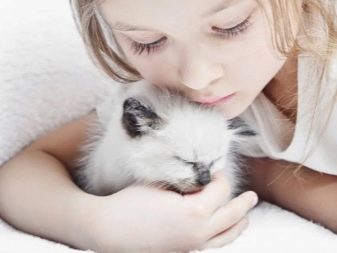

It is important to train you to the litter box on time, not to allow you to climb where you would not like to see your pet: tables, a sleeping place or a workplace. It was at this time that he becomes a member of a family in which everyone lives by the rules.
A cat that has entered the house from the street, but has adopted a new person, will protect him and the house. In this case, aggression towards other family members or guests is possible. It is much more difficult to train an adult, and this must be taken into account if there is a child in the house. You can earn the trust of a pet with care and affection, and encouragement with sweets.
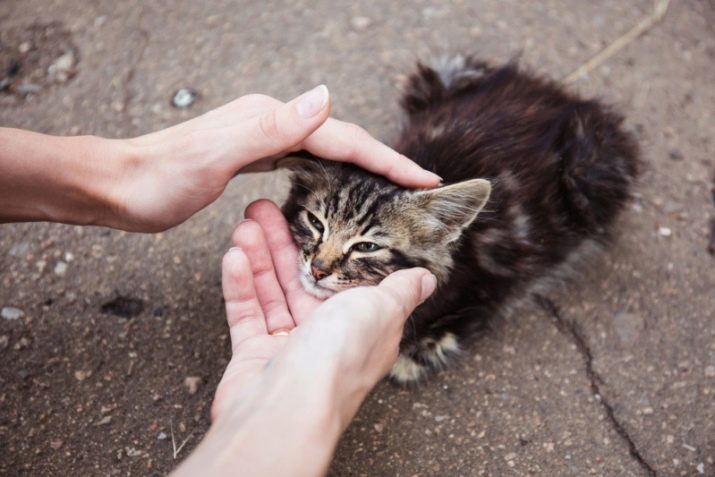
Top calm and affectionate breeds
Run through the ratings of the most affectionate cats, and you will see that the same breeds take first or fifteenth place. And this is not surprising, because everyone selects a friend for themselves. Therefore, we will not make a rating, but we will offer the top of the kindest, most loyal and friendly cats in the world.
- Abyssinian cat - an extraordinary clever and beautiful woman for whom human cubs are an object of play and care. She is active, which means she will not bother the owner for hours. She is curious about what you are doing, so she will follow you everywhere, but will try not to interfere. This breed is suitable for those who need a companion cat, friend and even companion, not a gripping toy. She is equally benevolent with all family members, including animals, but she will choose one owner for herself.
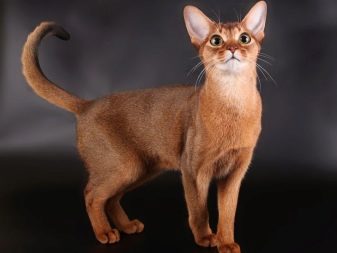
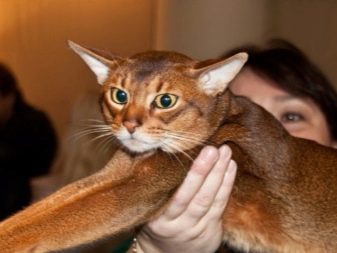
- Burmese cat (Sacred Burma) she is perfectly trained, and therefore intelligent and educated. She is considered the most affectionate and tame. A smart cat can play alone or with the owner, or sit quietly in her arms. Guests arouse mild curiosity, but not the object of aggression. The same attitude towards animals. For children, it is an anti-stress toy and a friend in noisier games. But educated Burmans know the boundaries of what is permitted. They react sharply to the mood of all family members: they can come up and console with their purr, or hide and not get in the way. A real blue-eyed or blue-eyed lady is always wearing gloves and a mask.
But kittens are born white. For this breed, quality food is important, otherwise the color may change.
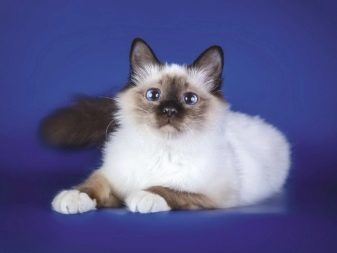

- It is easy to imagine the British shorthair cat in a royal castle or on the green cloth of a respectable person's work table. She will never be a soft toy, but will take care of children and other family members. For pets, it can be a strict nanny or leader of the pack. He understands well when it is possible to approach the owner, ask him about the working day, substitute his back for stroking, give him the opportunity to rest. If there is no one at home, then the Briton will calmly wait for her masters. Affectionate, calm, beautiful, independent, smart - she prefers communication with adults more than with children.

- The Burmese breed is completely different: it is catastrophically ill alone, she needs affection, communication, attention. The cat wants to play by itself and entertain the owner, she is ready to love and be loved. This means that she cannot be left alone for a long time, this must be taken into account when buying a kitten. Or you need to buy two pets, because you need to frolic with someone when the owners are not at home.Strangers arouse curiosity, but Burmese will not be imposed. It will endure any trick from children, even if a toothless baby wants to bite off an ear. She is ready to talk to an adult and sing him a lullaby.
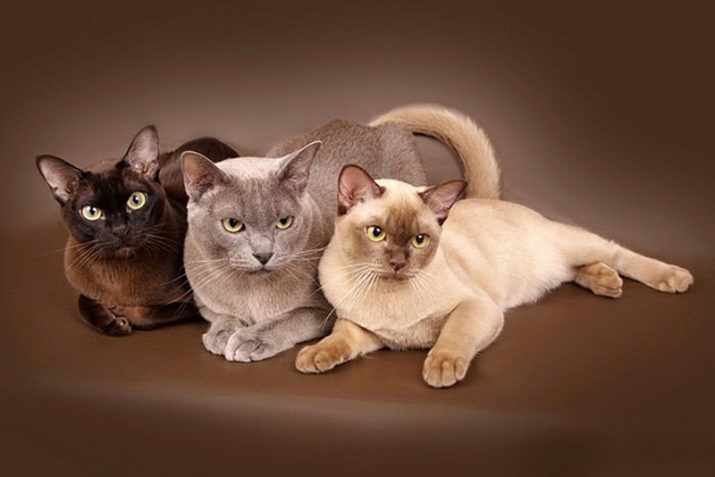
- Maine Coons are a large breed, which, according to legend, is the result of a natural crossing of the North American lynx and a cat or a raccoon and a cat. But all breeders claim that they are very intelligent, quick-witted animals that understand what logic is. Cats with tassel ears can look menacing, but they have a very loyal and gentle character. They love to play, but they can go about their business quite calmly, without disturbing the owners. They are loved by children and adults, and cats respond in kind. Adult Maine Coons grow to over a meter in size. They can be taught to walk in the streets, they will be happy to hunt there.

But be prepared for the fact that the fluffy cat will have to wash more often. Animals will never offend small and large family members on purpose, but since they are large, make sure that the cat does not accidentally crush your baby.
- Manks have no tail due to natural mutation.and this sets them apart from other breeds. They are very attached to their owners: to show their love, they can bring a caught mouse and put it in a prominent place. Manks are affectionate, calm, charming animals. They love and count on love. It is great to play with children, but it is important to explain that the stump of a Manx's tail is a very sensitive and painful place, and you do not need to touch it.
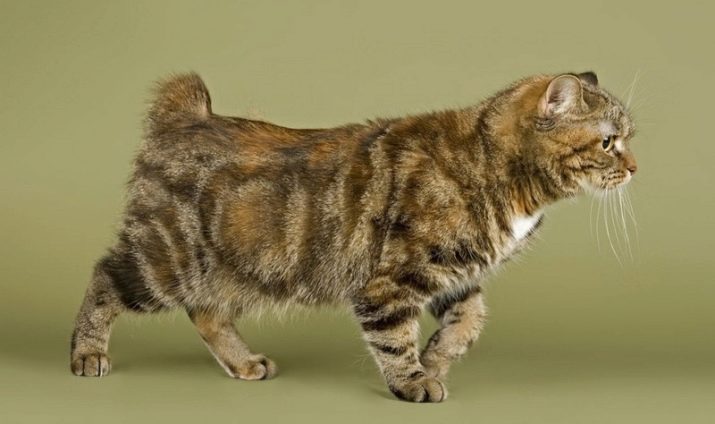
Other animals in the house are also friends, but hunting instincts may prevail, so small rodents and birds may be hurt.
- Neva Masquerade Cat is really always in a mask, but only on the face. She will never do anything on the sly (there will be no surprises in slippers). She is very attached and devoted to her master, but restrained in the manifestation of emotions. This is a friend and companion who feels the mood and is ready to help: sit next to him, lie down in a large place, purr. Very affectionate, but not intrusive, tolerant of guests. Children for the Neva beauty are the ones you need to take care of; calm down if they cry; play if they ask. If the child unwittingly offended the cat, then it will simply run away, but will not offend the human cub. He will be friends with all animals, including small rodents.
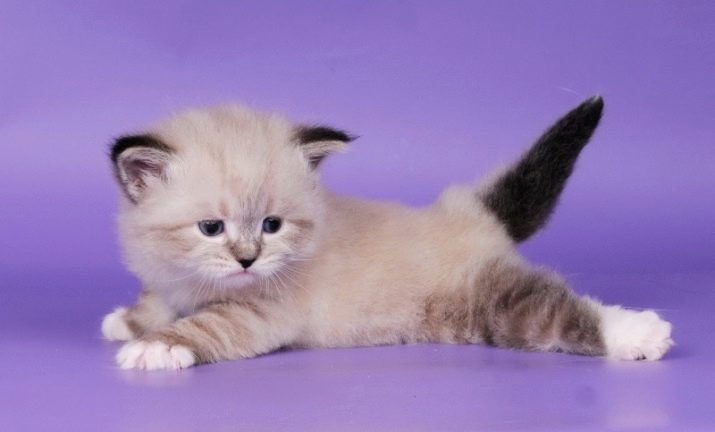
- The Persian breed is very popular with breeders, the reason for this is kindness, loyalty, calmness, phlegm with a regal bearing. Games are not a royal affair (although you can play according to your mood), but sitting beautifully in your arms is a pleasure. They will accompany the owner everywhere, answering love for love. Persian is called one of the laziest cats. He treats the hosts with love, and is wary of the guests. If children need a Persian to ride in a baby carriage, then he will ride: in a cap, in a dress. When there are other animals in the house, the Persian will not notice them, except perhaps a fly crawling along the window. The flattened muzzle and thick long hair are the physiological characteristics of the breed. If you are afraid that you will not be able to provide proper hair care (constant combing and bathing), then it is better not to get a Persian. They are considered stubborn, persistent: it will be difficult for the owner to hide from a long gaze. Curiosity is in their nature.


- The Russian blue cat is a kind character inherited from her. A new family member, a kitten of this breed will not immediately get used to the house and owners. But taking care of him and the affection of the owners will do their job: this will be a devoted friend who likes to be close to the owner (especially to sleep). This does not apply to guests at home, with them the pet will remain wary (if the cat showed attention to the guest, then this can be regarded as a small event). In all other respects, this is a curious, active, independent creature that may well stay at home unattended. The Russian blue has an independent character, which means that it lives on its own.She cannot be simply cuddled, even by children - she simply tolerates them on her territory, she will never release her claws even with the most unceremonious treatment.
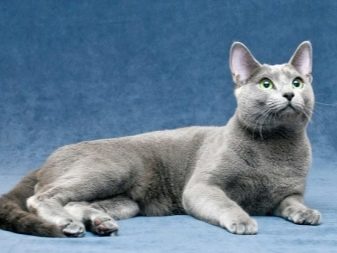
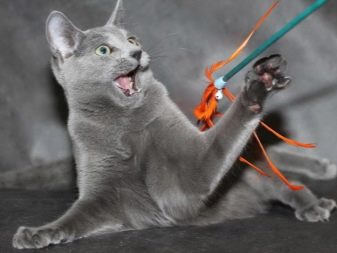
Representatives of this breed can live side by side in the house with animals of their own size or larger. But rodents and birds are prey.
- It is not for nothing that Ragdoll is called that, in translation from English the name of the breed means "rag doll"... Falling into the hands of the owner, he behaves like a very soft toy, relaxes and feels very comfortable. Semi-long-haired cats are very slow, kind, trusting, sociable. This is a great pet for a lonely person, whom he will love more than life. He is well trained, has a fairly high intelligence.

Ragdolls are good with both hosts and guests. Falling on hands, they immediately begin to rumble. Because of its long hair, it may not be a very comfortable toy for babies, but for the older generation it is a great friend and playmate. A big cat will never offend a child; in case of danger from a human cub, it will run away, but will not defend itself. Treats all animals equally well.
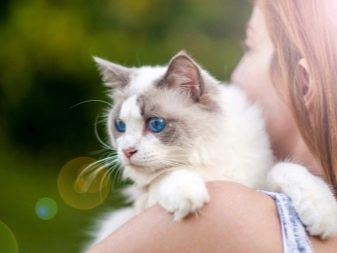
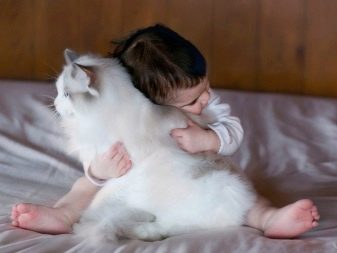
Due to their slowness, these cats are poorly grouped, so they should not be dropped or thrown, left alone on the windowsills with open windows.
- The Siamese cat is another popular beauty. Many of them are considered wayward, stubborn, jealous, vengeful, temperamental. Probably, a lot depends on upbringing. But their kindness and loyalty to the owner is noted by absolutely everyone. Cats have a keen mind and a constant desire to learn something new. Pets need constant communication with a person, they love their owners, constantly talk to him, caress. But strangers are treated with caution.

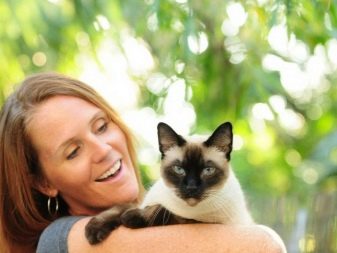
For children, a Siamese is a nanny, but only if the child does not harm the cat... If a pet was bought for a child, then he should take care of it, since the Siamese have only one real owner. Adults should look after the relationship between children and cats of this breed.
For hamsters and other small animals, the Siamese cat is a hunter, and they are prey for it. The Siamese will take a closer look at the larger animals, and then decide whether to communicate with them. Short-haired Siamese practically do not need care: they do not like to swim in panic, agree to dry food, but they also love natural food. They have several inherited diseases.
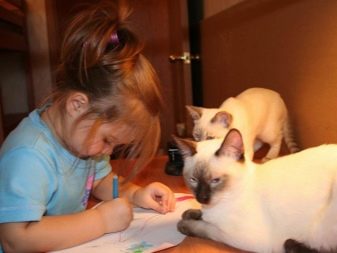
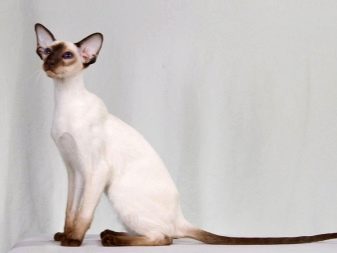
Siam is amenable to training, but with great difficulty. But they agree to walk even in a collar.
- The Siberian cat is a large and powerful animal with a good disposition. Once in the house, the pet will choose one owner - the one who feeds. With this shaggy "fur coat" the house will be warm and cozy, because the Siberian can easily get along with both adults and children. If the child constantly cares for the cat, then they will be the best friends for the whole cat's life. This does not mean that the cat will poke in the face and purr constantly, but rather show respect for family members.

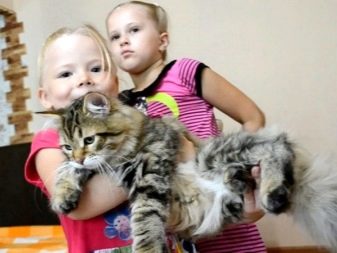
At the same time, she acutely feels the state of the household - both physical and psychological. There are cases when a Siberian cat pulled pain out of a person, lying on him, after which it hurt for a while. Siberians zealously guard their territory. It will be problematic to bring a new animal into the house after the appearance of a Siberian cat there. But if the animals make friends, then it will be for a long time, since Siberians do not like loneliness. For the game, the Siberian cat can use any object that is nearby. She also loves to observe everyone from a height, so do not be surprised to find her on the refrigerator or under the ceiling. This breed is large, weighing up to 9 kg. Long coat requires careful maintenance, otherwise mats will appear. But, despite the "fur coat", Siberians are hypoallergenic.
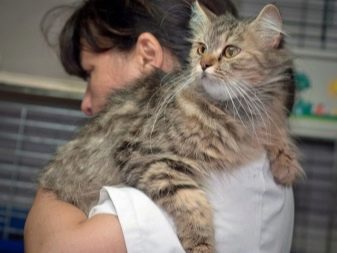
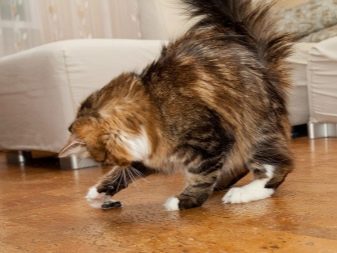
To make the coat shiny, the cat needs to be fed properly, especially since it is picky about food. This breed has no genetic diseases.
- Sphynxes, despite the peculiar appearance and aggressive expression of the muzzle, are very affectionate cats. Some ratings consider this breed to be the most affectionate. They not only hate loneliness, they need communication and human warmth in the literal sense of the word. Therefore, they will gladly climb onto their knees or into bed, ready to caress and caress. These are smart, energetic pets, infinitely loyal to their owner.

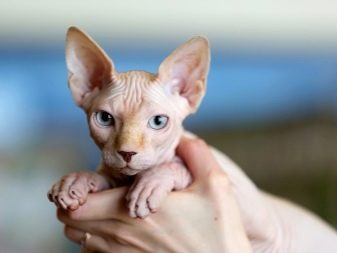
One of the few breeds that enjoys meeting new people. It's even surprising, but this stern-looking cat, allows the child to do whatever he wants with himself, without showing aggression. Only in the most difficult situations will the cat call for help, meowing loudly. For other pets, this is a leader and protector.
3 varieties of the Sphynx breed have been bred: Canadian, Donskoy, Peterbald. Representatives of all directions are small, weighing 2-5 kg. Due to the lack of hair (or very short hair), sphinxes often catch colds from domestic drafts, they can catch a skin disease, and an unreasonable owner can bring a cat to obesity. This is the only breed that sweats. To deal with this problem, pet needs baths... It is recommended to give food as food.
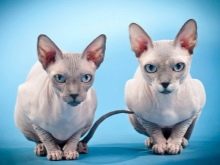
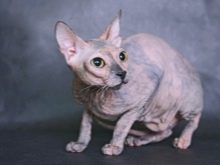

- The Scottish Fold cat is a plush toy, a lot of friendliness to all family members. She adores the owner, licks him and lies down next to him: it's better there than in her arms. For children and adults, this is a relaxer that will hum alongside. But you cannot offend a cat, she will not tolerate a rude attitude, although she will never release her claws. Treats all animals calmly. Scottish Fold is distinguished by a special structure of the auricle, easy training, playfulness and a desire to sleep on its back. Scots don't like loud sounds. Caring for them is easy: combing and washing as needed, cleaning ears and eyes, trimming nails and eating right.

- Exotic breed (exotics) think slowly, take their time to look closely at people, but after making sure of their love for themselves, they become trusting, gentle, faithful. These are actors, they love to play on the viewer. But at the same time, they do not allow themselves to be squeezed by children. The main rule of coexistence with children and animals is "do not offend each other." If the owner has disappeared from the life of the exotic for a long time, then he may get sick. Its exotic appearance in the form of a snub nose and cheeks makes it a "charm" for everyone.
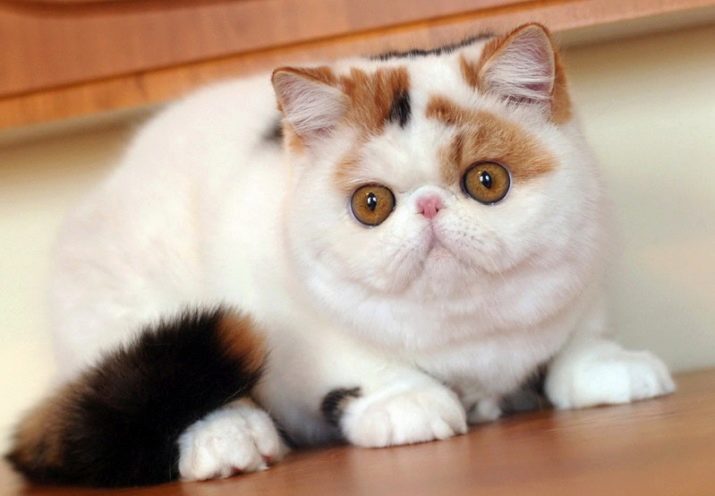
Tips for choosing and keeping kind cats
In an era when families decide for a maximum of one child, a purebred (as well as non-purebred) kitten in the house is not a luxury: a friend for a child and an object of care for a lonely person. And since good cats are social animals, it is very important to observe the following recommendations for their selection and maintenance:
- you should not have a kitten if the apartment is empty most of the time - the animals also get sick and die of loneliness;
- it is difficult for a pet to explain that you have come home from work and are tired - he is waiting for you, he needs affection, take him in your arms, stroke him, listen to his purrs and make sure that after a hard day you rest much faster;
- explain to the child that the kitten is alive, it is not a toy that you can endlessly squeeze, dress up in doll clothes and, moreover, paint with cosmetics; no matter how affectionate the beast is, he needs personal space;
- if the house is allergic to cat hair, then it is better to choose a sphinx kitten;
- for single people, we recommend choosing an exotic that loves to sit on your hands;
- for children, one of the best options is ragdoll, which treats children not only as a friend, but also as an object of protection;
- for an apartment, experts recommend the Scottish Fold or Neva Masquerade, because these breeds are easy to comb, they lose little hair;
- if you want to have a smart pet next to you - get a Maine Coon, but do not forget that he needs a lot of space - this is a big "cat dog".
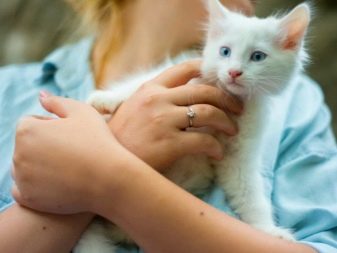
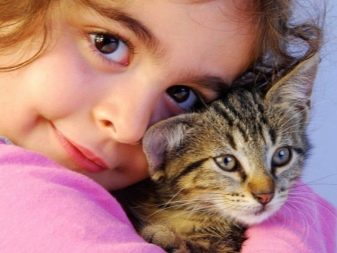
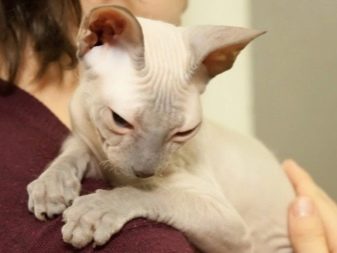
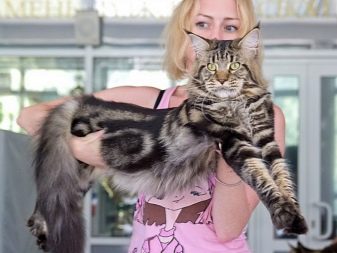
For information on what breed of cats are the most affectionate, see the next video.

































I don't have Scots in my arms. I think this is a feature of the breed.